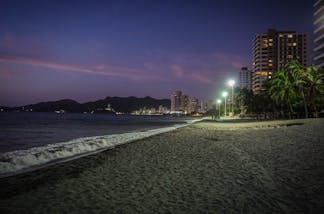Aug 28, 2020 in Discovery, Evolution, Science

If there is magic on this planet, it is contained in water, underscoring the fact that Earth is the only planet known to have liquid water on its surface –a fundamental characteristic when it comes to explaining the emergence of life. “We forget that the water cycle and the life cycle are one,” said scientist and explorer, Jacques Cousteau. Which raises a fascinating question: was Earth’s water always present in the rocks that made up our planet, despite its formation in a region of the Solar System where temperatures were too high for water to condense and clump together with other solids as ice? Or, as some scientists have suggested, delivered later by asteroids and comets that bombarded the Earth?
In the journal Science, scientists from the Centre de Recherches Pétrographiques et Géochimiques in Nancy (CNRS/Université de Lorraine) contribute to this debate by showing that most of the water present on the Earth today has probably been there right from the very beginning.
Three Times the Amount of Water in Earth’s Oceans
However, the amount of water present in the rocks that made up the Earth had never been accurately estimated. The scientists focused on meteorites with a composition similar to that of the Earth, called enstatite chondrites, and more specifically on a small number of these that underwent little heating over the course of their lifetime and thus still exhibit a primitive composition.
Using two complementary techniques, they measured their content in hydrogen and determined precisely where part of this was located. Their results show that the Earth’s primitive rocks probably contained enough water to provide at least three times the amount of water in the Earth’s oceans, and possibly much more.
Hydrogen Composition –Case Closed
To cap the argument, the hydrogen in these meteorites has the same isotopic composition as that of the water stored in the Earth’s mantle, while the isotopic composition of the oceans is consistent with a mixture containing 95% of water from the enstatite chondrites and a mere 5% of water delivered by comets or water-rich asteroids.
The Daily Galaxy, Jake Burba, via Science and CNR
If there is magic on this planet, it is contained in water, underscoring the fact that Earth is the only planet known to have liquid water on its surface –a fundamental characteristic when it comes to explaining the emergence of life. “We forget that the water cycle and the life cycle are one,” said scientist and explorer, Jacques Cousteau. Which raises a fascinating question: was Earth’s water always present in the rocks that made up our planet, despite its formation in a region of the Solar System where temperatures were too high for water to condense and clump together with other solids as ice? Or, as some scientists have suggested, delivered later by asteroids and comets that bombarded the Earth?
In the journal Science, scientists from the Centre de Recherches Pétrographiques et Géochimiques in Nancy (CNRS/Université de Lorraine) contribute to this debate by showing that most of the water present on the Earth today has probably been there right from the very beginning.
Three Times the Amount of Water in Earth’s Oceans
However, the amount of water present in the rocks that made up the Earth had never been accurately estimated. The scientists focused on meteorites with a composition similar to that of the Earth, called enstatite chondrites, and more specifically on a small number of these that underwent little heating over the course of their lifetime and thus still exhibit a primitive composition.
Using two complementary techniques, they measured their content in hydrogen and determined precisely where part of this was located. Their results show that the Earth’s primitive rocks probably contained enough water to provide at least three times the amount of water in the Earth’s oceans, and possibly much more.
Hydrogen Composition –Case Closed
To cap the argument, the hydrogen in these meteorites has the same isotopic composition as that of the water stored in the Earth’s mantle, while the isotopic composition of the oceans is consistent with a mixture containing 95% of water from the enstatite chondrites and a mere 5% of water delivered by comets or water-rich asteroids.
The Daily Galaxy, Jake Burba, via Science and CNR

















